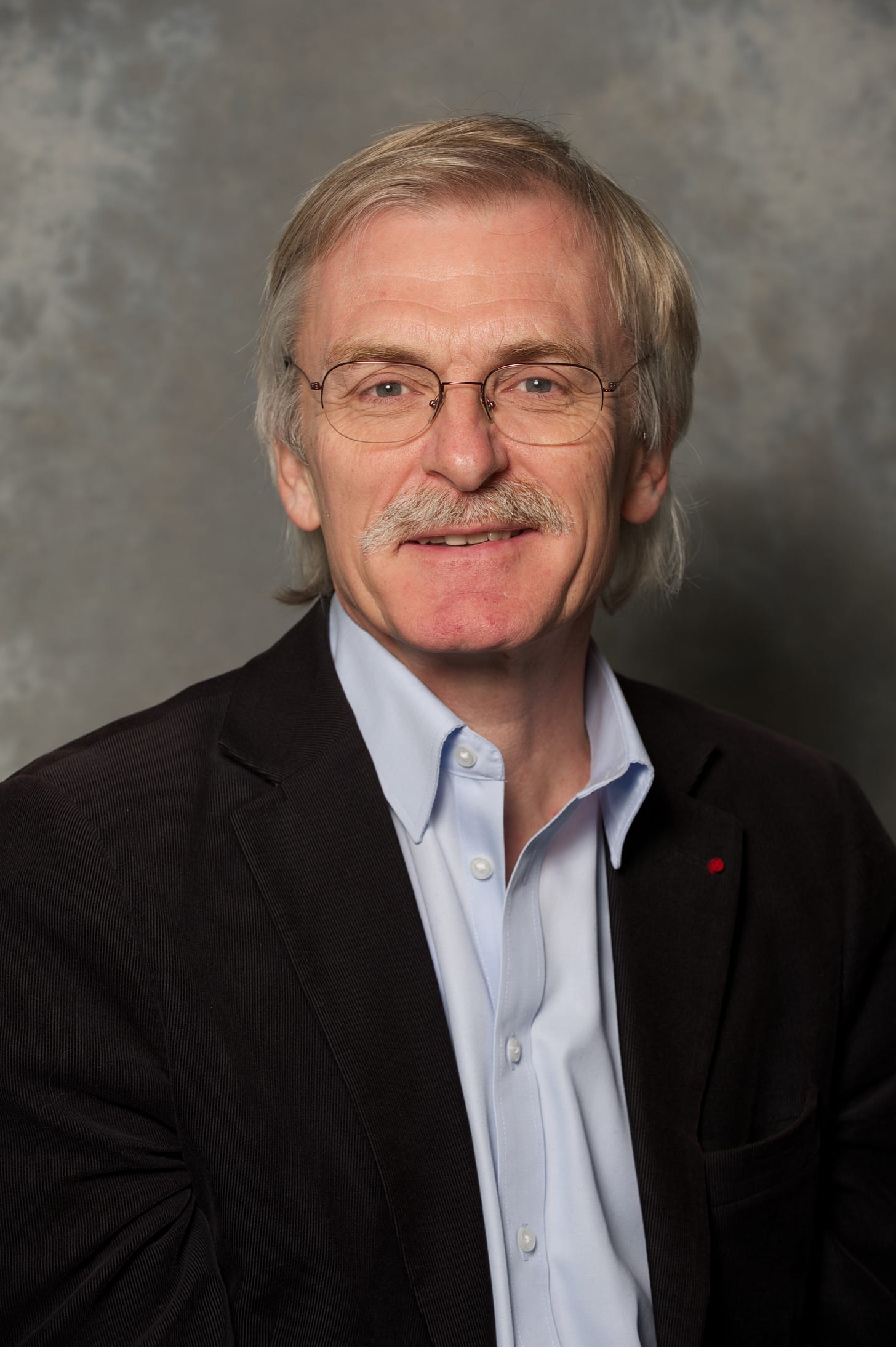Spineless. Again.
"On reading," by Simon Wain-Hobson, is a weekly discussion of scientific papers and news articles around gain of function research in virology.
Since January 2024, Dr. Wain-Hobson has written weekly essays for Biosafety Now discussing risky research in virology. You can read his entire series here.
Half a century ago, molecular biologists came together… to discuss the benefits and dangers of what was then a revolutionary technique: stitching together DNA from different species, creating chimeras the world had never seen. Much has been written about the 1975 meeting. Asilomar has become a shorthand reference to self-governance attempts to mitigate harm posed by any new technology.
Time and shorthand have led to myths and misunderstandings. A couple of remarks from historians who have studied the original meeting may be appropriate.
Biosafety Now member Susan Wright has written extensively on the early days of gene cloning, notably her book Molecular Politics, University Chicago Press (1994). In a recent email she wrote The Asilomar conference in 1975 was an inherently political event, designed to support a previous decision that the National Institutes of Health (the primary funding source for genetic engineering) would develop voluntary safety controls for the new techniques. It was essential, therefore, for Berg and members of the organizing committee, to exclude from consideration the most fundamental questions about future military, industrial, and medical applications.
For Matthew Cobb from the University of Manchester there was a threat posed by the potential application of recombinant DNA to biological weapons developments. This issue, which was deliberately taken off the agenda by the organizers and sidestepped in the final declaration, was one of the most significant implications of recombinant DNA that was not discussed at Asilomar. See also.
Ouch! With a vastly more powerful technology 50 years on, available to huge numbers of labs across the globe far more cheaply, there is much to discuss although we’ll focus on Gain of Function research making novel human viruses, aka GOF 2.0, and Mirror Life.
There was round agreement at the meeting about drawing red lines around research into bioweapons and “mirror life”—bacteria that have the opposite orientation of natural right-handed DNA and left-handed amino acids. Mirror Life is an easy target. First, a collective of top researchers wrote about the dangers in an article in Science which ensured wider discussion. Second, US NIH top brass had not come out with a prior opinion, unlike GOF research on influenza viruses, so there were no chilly headwinds to freeze discussion (Chilled virology). The dangers of Mirror Life research are perhaps a decade away which is why scientists want to talk about it now.
But no consensus emerged on many other research avenues, including artificial intelligence (AI), synthetic cells, dangerous pathogens, and the use of genetically engineered bacteria at farms. The research on dangerous pathogens must be a reference to the GOF 2.0 controversy that has begotten virology since late 2011. Now this work has already generated several novel human viruses that most virologists expect, but can’t prove, could start a pandemic.
That’s a 24 year difference between a horrible but unclear future threat from a Mirror Life bug and the here and now of novel human viruses in the freezers of US labs as of 2011, available on the web, curtesy of the US taxpayer.
Yet this group of 300 at Asilomar 2025 agreed on the threat from Mirror Life but not GOF virology. Houston, we have a problem.
There are the people who are super rosy: AI is going to let us treat diseases we’ve never treated before and make developments that we cannot imagine. But then there are people who are saying that we’re going to blow up the world,” said Yana Bromberg, who studies biomedical informatics at Emory University. Were there no adults in the room clamoring for risk benefit analyses - even if they were on the back of an envelope - rather than state the two sides and move on? The easy option.
Russ Altman, a Stanford bioengineer… doubted AI would help bad actors create bioweapons or other nasty surprises. “There are way easier ways to wreak havoc: Get elected, do a bomb, fly a plane into a building.” This just means that he can’t get beyond his own thoughts. Can someone tell him the Biological and Chemical Weapons Convention has met in Geneva since before he went to college?
This is a good lead into the next quote. No ambiguity surrounded the question of research into bioweapons. “A group of people like this reaffirming that biology must not be weaponized for harm matters,” said Christine Parthemore, who runs the Council on Strategic Risks. Yet that’s another easy remark. Who can condone building bioweapons? Yet we have seen that the GOF 2.0 bird flu viruses are indistinguishable from biological weapons agents, both in terms of endpoints and from an ethical standpoint (Virus research of concern) sponsored by the NIH. But no consensus emerged on many other research avenues, including… dangerous pathogens. It was too hot to handle so they blinked. Like many others.
“Many outside of our local communities often ask: ‘What the heck are you people doing, that really sounds like a bad idea,’” said Stanford microbiologist David Relman, a longtime critic of such work. “We need to address that question in a serious way.” Columbia University virologist Ian Lipkin, who was also at the meeting, stressed that “we need a better definition of pathogens of concern.” Both remarks are way too weak.
• The GOF 2.0 controversy is in its fourteenth year. The infectious disease crowd was frozen by the glacial chill from the NIH while some advocates of this work want to censor critics (Censoring virology).
• Nope, a definition could be penned on the back of another envelope after a few minutes in the bar. Or read Virus research of concern.
Given the dramatic cuts President Donald Trump’s administration is making in science, participants should think about the “moment in which we find ourselves,” and should carefully balance how they discuss the risks of science, said Paul Friedrichs, who headed the Office of Pandemic Preparedness and Policy in former President Joe Biden’s administration. “I implore those who are working on statements to highlight the promise of these technologies,” he said.
Let that sink in for a moment. While unsaid, we’re effectively asked to stress the benefits of ongoing research and tone down any associated risks. Risk-benefit analyses? On hold. Discussion of dual use research of concern? Mañana.
Several essays have mentioned a 2013 study showing that scientists overestimate the benefits and underestimate the risks. So now with encouragement from Dr. Friedrichs the outcome is obvious - the planet becomes less protected for scientists must be funded one way or another. Any benefits are professional, to be reaped by a few virologists with risks transferred to a public of some 8 billion, which is completely unethical (Ethics of GOF virology). It’s difficult to imagine a more irresponsible remark.
Obviously, first do no harm has been lost from his playbook. And yet he’s an MD who has taken the Hippocratic oath. So much for words.
Remember, the meeting was attended by an august 300 which included scientists from many disciplines as well as conservationists, bioethicists, lawyers, former government officials, national security experts, journalists. And none hollered? What are you paid for? Intellectual weakness across the board.
Fortunately, molecular biologist and Nobel laureate Richard Roberts, also present in 1975, thought the original meeting “was really good, and it was done for all the right reasons,” but felt its reincarnation was too diffuse. “I’m a bit disappointed, mainly because I’ve not seen what I would look upon as a really clear agenda.” Given his English background, this is a masterclass in understatement.
Endy, a co-organizer, stressed near the meeting’s end that changes are happening faster today than 50 years ago—whether it’s new biotechnologies emerging, the development of AI models, or species loss. “There is so much else happening,” Endy said. “I don’t think we have a lot of spare time.” Talk of species loss when virologists have made novel human pathogens that could kill millions!? How many dead do you need before speaking clearly?
Conclusion
More grandstanding by scientists and organizers too afraid to bite the bullets, comfortable feeding off taxpayer and philanthropic monies with no will for rocking the boat. Just like 50 years ago.
We’ve just come through the COVID-19 pandemic. The world doesn’t need more or worse.
Damn it, can’t you see? Little children just want to learn to read and play.
Aside
Re the sentence, With a vastly more powerful technology 50 years on, this is no exaggeration. We can design novel genes for targeting cancer cells, edit precisely harmful DNA mutations, insert genes back into our genomes. And it works wonderfully.
If a malevolent mind, a modern Professor Moriarty perhaps, set to work, he would come up with some very nasty microbes. On reading certainly could but wouldn’t.
Yet it’s done. A number of scary GOF engineered bird flu viruses are out there developed by university professors with surprising ease. And by the way, you should be losing sleep over the human adapted H7N1bird flu virus.







The biggest risk is causing pandemics because of all the money that is involved. I don't see military use of bioweapons, even as unspeakable war crimes are being committed now. I would take the mass production of vaccines and drugs out of the context of profit maximization to eliminate the temptation of causing a pandemic for the money.